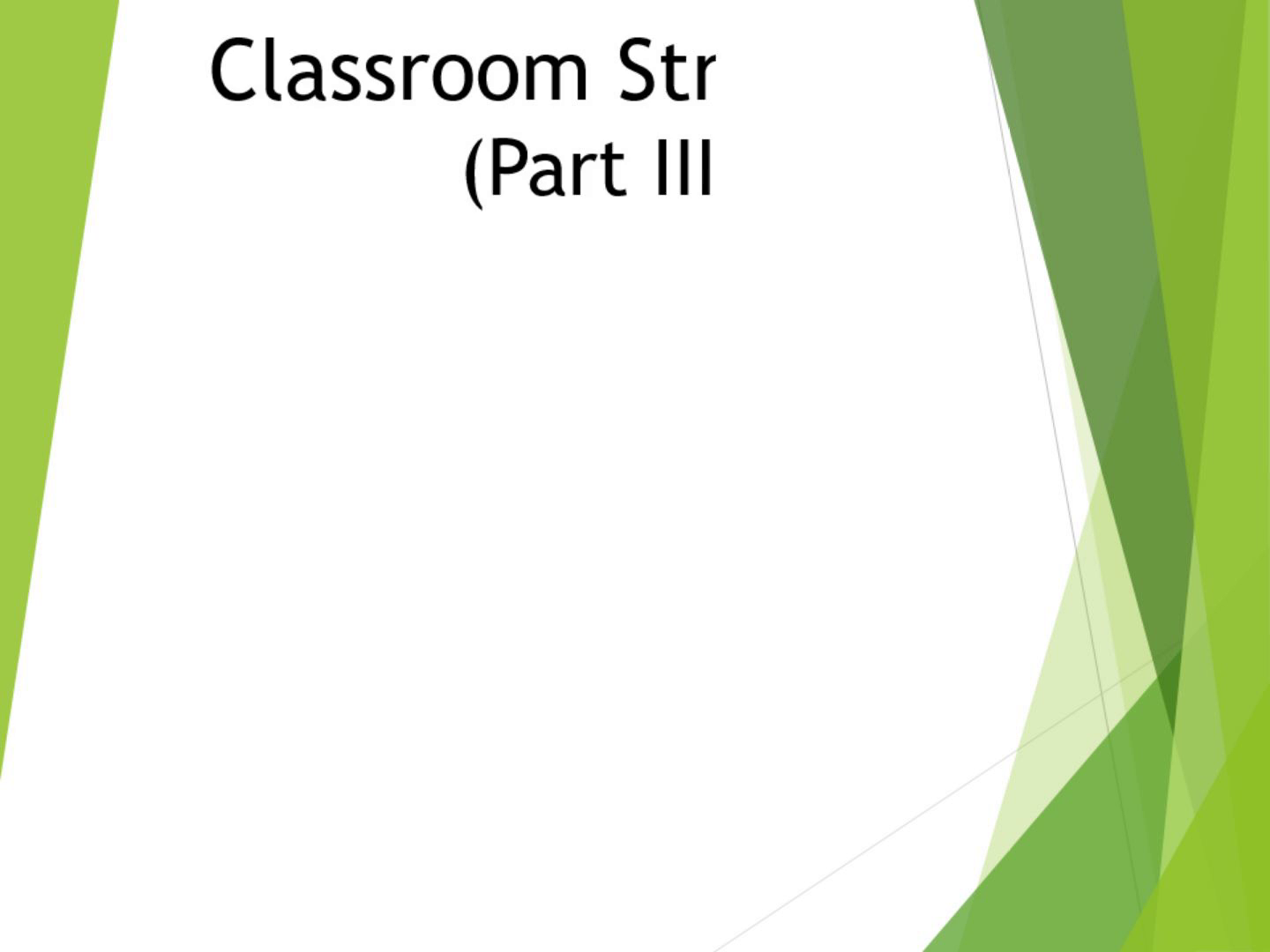
Page 1 (0s)
Classroom Strategies (Part III). s SOUTHWEST ISD SPECIAL EDUCATION Empowering Unique Minds, Shaping Bright Futures.
Page 2 (10s)
[Audio] This instructional module will cover. Redirecting Overactivity Physical Exercise And Simplifying Activities.
Page 3 (19s)
[Audio] "Redirect Overactivity." Put strategies in place that will allow the student to productively channel their energy for good. Teachers should take a positive, proactive approach. The ultimate goal is to help teach high-energy students how to self-regulate their own behavior..
Page 4 (35s)
[Audio] Strategic Job Placement: Giving every student a community helper job will lighten the teacher's load and cultivate community. Overactive students should get a job that requires frequent movement and/or one that increases responsibility..
Page 5 (52s)
[Audio] Be very purposeful with your selections! Weekly Line Leader. Librarian Assistant (returning and shelving books). Font Office Messenger. Classroom Attendance Assistant. Recycler (waste paper and plastics). Playground Equipment Carrier. P.E. Coach Assistant..
Page 6 (1m 10s)
[Audio] Brain Breaks: Embedding movement activities throughout the day. Research shows that giving kids frequent brain breaks to reset their energy level improves their ability to focus, retain more, and stay on task. Sites like GoNoodle.com allow students to dance and get "the wiggles out.".
Page 7 (1m 32s)
[Audio] Selective Seating. Be mindful with seating arrangements. In the lunchroom, try placing high-energy students at a corner seat (less people/more space). On the carpet. let overactive students sit in the back row (where they can stretch-out and/or sit on their knees)..
Page 8 (1m 51s)
[Audio] Visuals & Tactile Items: Create multi-sensory activities to hold students' attention. Use visuals to communicate friendly reminders. Fidget toys are self-regulation tools to help with; focus, attention, calming, and active listening..
Page 9 (2m 9s)
[Audio] There are many different types of fidget toys, ranging from squeezable stress balls to bendable sticks to rubber bands that attach to seat and desk legs..
Page 10 (2m 23s)
[Audio] Research indicates that most children learn better when their hands are active and funneling expandable energy. This allows students to better focus on what they are trying to learn. Currently accessible vendors carry a wide range of these manipulatives.
Page 11 (2m 40s)
[Audio] Never get rid of recess. Taking away play and exercise is counterproductive for the students who need it the most. If a consequence is necessary, try withholding another privilege instead. If safe, consider having the student sit outside the outside of the playground area for a minute or two as a consequence, before getting to "join into the fun!".
Page 12 (3m 5s)
[Audio] "Physical Activity." Physical activity has a direct impact on the behavior and development of the brain. According to the US Center for Disease Control and Prevention (CDC), physical activity has an impact on cognitive skills such as concentration and Attention. It also enhances classroom attitudes and behaviors, all of which are important components of improved academic performance..
Page 13 (3m 29s)
[Audio] Physical activity will boost their self-esteem; nurture relationships with peers, parents and other important adults in their lives such as teachers and coaches. An environment that supports their autonomy and is caring and socially supportive will enhance their motivation, their behavior in relation to physical activity, and their general well-being..
Page 14 (3m 49s)
[Audio] Regular and organized physical activity training helps to build important life skills Such as; interpersonal relations, self-regulation, core values, respect, and social responsibility..
Page 15 (4m 1s)
[Audio] "Simplify Activities." Sometimes when a teacher wants to introduce a new activity a student may struggle to grasp a new concept being introduced. This can be due to a lack of prior instruction, regression due to breaks in instruction or, insufficient virtual instruction..
Page 16 (4m 22s)
[Audio] Also trauma may cause behavioral concerns, and now the student struggles to maintain concentration during direct instruction and/or independent work..
Page 17 (4m 32s)
[Audio] Contributors. Beya Moray, Educational Diagnostician Steffanie Sparrow, Licensed Specialist in School Psychology Mario Bernal, Licensed Specialist in School Psychology Valerie Torres, Licensed Specialist in School Psychology Ruth Viagas Graduate Student.
Page 18 (4m 50s)
[Audio] End of. Classroom Strategies (Part 3). End of Classroom Strategies (Part III).